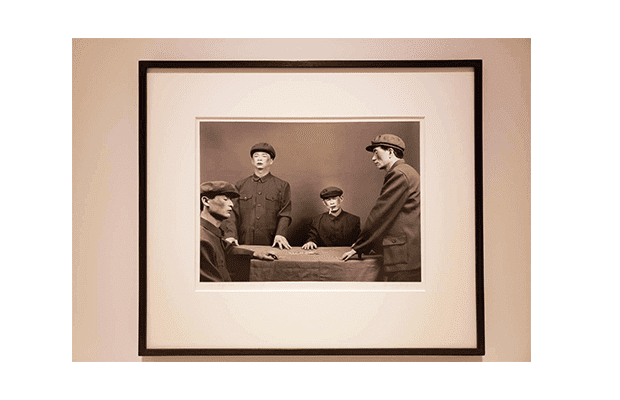Every simple topic seems to become complex and confusing when it is related to China. The reasons behind this interesting phenomenon are diverse. From my perspective, it’s not just because of China’s unusual political system and huge population, but also because of the numerous and complicated views of this system by the western world. China acts as an effective catalytic agent — small moves made by China can lead to exponential changes across the globe.
What I ask is whether it is novel to understand the views of this country through diverse artists’ angles and analyse the way in which they re-define Chinese society? Is it novel to retain Western views of these artists and of Chinese society at large? Or is the White Rabbit Gallery just another kind of avenue for political propaganda perpetuating the existing illusion of China in the eyes of Westerners?
Founded in 2009 by Judith Neilson, a billionaire and entrepreneur, White Rabbit Gallery is regarded as one of the most significant avant-garde galleries in Australia, mapping Chinese contemporary politics and society. The founder spent several years collecting the artworks to construct the world of China that she imagined. The collections in the gallery are all created by artists from China or Taiwan. These artworks are all made underground, hidden away from the prying eyes of the Chinese government. You can see the contemporary Chinese artist’s strong passion for their art, despite the strict censorship of their country, They continue to express their voices and provide introspections on society. I was also attracted to the various art forms and mediums created by the artists whose art adorns White Rabbit’s walls. These included paintings, sculptures, digital projections, engravings, and mechanical devices amongst others. This variety expands the boundaries of contemporary art and provides audiences with more opportunities to experience what China is.
The exhibition I viewed focussed on the idea of marriage and sex in contemporary Chinese society. A few politically sensitive topics are also infused into the exhibition such as the “centralization of power,” “freedom of speech” and “the silent majority.” What most impressed me in this exhibition were the series of fictitious ‘whale state’ artworks created by Taiwanese artists. Here, this non-existent state is materialised into tangible and structured details such as slogans and pictures. The poster hanging up on one of the walls, for example, depicts several opened human mouths, exposing black lips and zig-zag teeth. The headline of “Glorious whale state citizens and Freedom of speech” is explicitly inscribed in the upper space of the picture. The head of a man with a giant letter “X” overlapping it represents the idea of unifying thoughts. On the other side of the room, figures in a portrait photo express a collective unconsciousness. Their eyes are closed or looking sideways.
There’s no doubt that in the eyes of the Western world and the Taiwanese artists, mainland China is a non-democratic country in which freedom and human rights are restricted by the government. But this assumption leads to a more in-depth question. How do we identify the boundaries between reality and fiction? To what extent do the artworks map this reality correctly? These are age old questions, and hark back to consistently negative opinions of the Soviet Union which dominated the Western conscious half a century ago. The fear of the red regime has been transposed to China these days. It seems the most regular impression of China in the Western World is nothing more than “strict censorship,” “no freedom of speech” and “the silent majority”. These conceptions, highlighted by media again and again, have subconsciously influenced people to assume there is nothing in China beyond the stereotype of the red regime. To a certain degree both the audiences and the artists become the characters in these ‘Whale society’ images — the silent majority dominated by the political media. Audiences should consider the deeper meaning behind these images and their complexity. They must consider its essence, not just its surface meaning.
Another series of art works in the exhibition focus on the existing opinions and values of sexuality and marriage in China. The first image depicts a crowd of naked men in line. In a traditional painting style, the main naked character in the picture is of a wom*n. The function of the painting is mainly to stimulate masculine erotic desire. They are looked upon by the observers — the upper-class men. In this picture, gender is turned upside down. Wom*n hold a sense of power, advocating a sense of gender equality and rejection of toxic masculinity. Apart from that, a set of animations also challenge further intrinsic taboos of society — they challenge the view that reproduction is underlyingly dirty and crazy. In the rotating animation, a vagina becomes a mouth, breasts squeeze lemon juice onto a bald head and the expression ‘to kiss ass’ is given a literal interpretation. Sexuality is not shameful in this place, it’s just like any other part of our body.
These images are highly stylised and exaggerated. But it means that the sexual revolution pushed forward by these artists are finally being accepted by Chinese citizens, — though the majority of Chinese people still hold conservative views on gender, especially in rural areas. Meanwhile authority still heavily controls individual expression which restricts sexual liberation as well. Because of this, it’s quite difficult for me to see gender as political, but the exhibits of the White Rabbit Gallery certainly provide a good way to begin this discussion.
In the White Rabbit Gallery, what is important is not just the artwork that you see, but how you differentiate it from various other artworks and the holistic layout of the gallery that create surrounding illusions. Every piece of artwork is political in its own way. I firmly believe this to be true.





